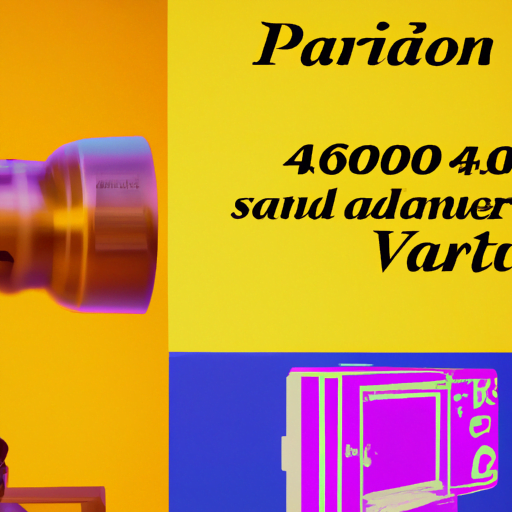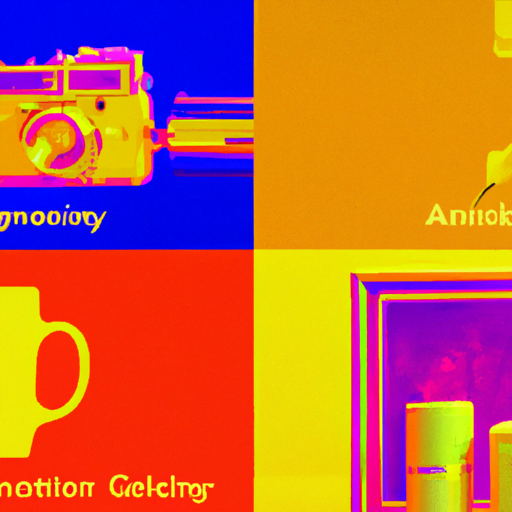
-
Table of Contents
The Future of Graphic Design: Trends and Predictions

Graphic design is an ever-evolving field that constantly adapts to new technologies, trends, and consumer preferences. As we move into the future, it is essential for graphic designers to stay ahead of the curve and anticipate the changes that will shape the industry. In this article, we will explore the emerging trends and make predictions about the future of graphic design.
1. Minimalism and Simplicity
One of the most prominent trends in graphic design is the shift towards minimalism and simplicity. In a world saturated with information and visual clutter, designers are embracing clean and uncluttered designs to grab the viewer’s attention. Minimalist designs focus on essential elements, using negative space and simple typography to create a powerful visual impact.
For example, Apple’s branding is a prime example of minimalism. Their clean and simple designs have become iconic, instantly recognizable, and synonymous with their products. This trend is likely to continue as consumers crave simplicity and clarity in an increasingly complex world.
2. Bold and Vibrant Colors
While minimalism emphasizes simplicity, another emerging trend in graphic design is the use of bold and vibrant colors. Designers are moving away from muted and neutral color palettes and embracing vibrant hues to create eye-catching visuals.
Brands like Spotify and Airbnb have successfully incorporated bold colors into their designs, making their products visually appealing and memorable. This trend is likely to continue as companies strive to stand out in a crowded marketplace and capture the attention of their target audience.
3. Custom Illustrations and Hand-drawn Elements
In an era dominated by digital media, there is a growing demand for authenticity and personalization. As a result, graphic designers are increasingly incorporating custom illustrations and hand-drawn elements into their designs.
For instance, Mailchimp, an email marketing platform, uses custom illustrations throughout their website and marketing materials. These illustrations not only add a unique touch but also help to humanize the brand and create a more engaging user experience.
4. Motion Graphics and Animation
With the rise of social media and video content, motion graphics and animation have become essential tools for graphic designers. Motion graphics can bring static designs to life, adding an extra layer of engagement and interactivity.
Brands like Google and Facebook have embraced motion graphics in their advertising campaigns, creating visually captivating and memorable experiences for their users. As technology continues to advance, we can expect to see more sophisticated and immersive animations in graphic design.
5. Augmented Reality (AR) and Virtual Reality (VR)
As AR and VR technologies become more accessible, graphic designers have a unique opportunity to create immersive and interactive experiences. AR and VR can be used to enhance traditional graphic design elements, such as packaging or print materials, by adding a digital layer of information or interactivity.
For example, IKEA’s AR app allows users to visualize furniture in their own homes before making a purchase. This not only enhances the shopping experience but also reduces the risk of buyer’s remorse.
6. Data Visualization
In an era of big data, the ability to effectively communicate complex information is crucial. Graphic designers are increasingly being called upon to create visually appealing and easy-to-understand data visualizations.
Companies like Google and The New York Times have set the bar high with their data visualizations, making complex information accessible and engaging. As data continues to play a significant role in decision-making, the demand for skilled data visualization designers will continue to grow.
7. User-Centric Design
As technology becomes more integrated into our daily lives, user-centric design will become increasingly important. Graphic designers will need to focus on creating designs that prioritize the user experience and cater to the needs and preferences of their target audience.
Companies like Airbnb and Uber have built their success on user-centric design, creating intuitive and seamless experiences for their users. This trend will continue to shape the future of graphic design as designers strive to create designs that are not only visually appealing but also functional and user-friendly.
Summary
The future of graphic design is exciting and full of possibilities. As technology continues to advance, graphic designers will need to adapt and embrace emerging trends to stay relevant in a rapidly changing industry. From minimalism and bold colors to custom illustrations and motion graphics, the future of graphic design is likely to be characterized by simplicity, authenticity, and interactivity.
By staying informed about the latest trends and continuously honing their skills, graphic designers can position themselves as valuable assets in a world where visual communication is more important than ever.
